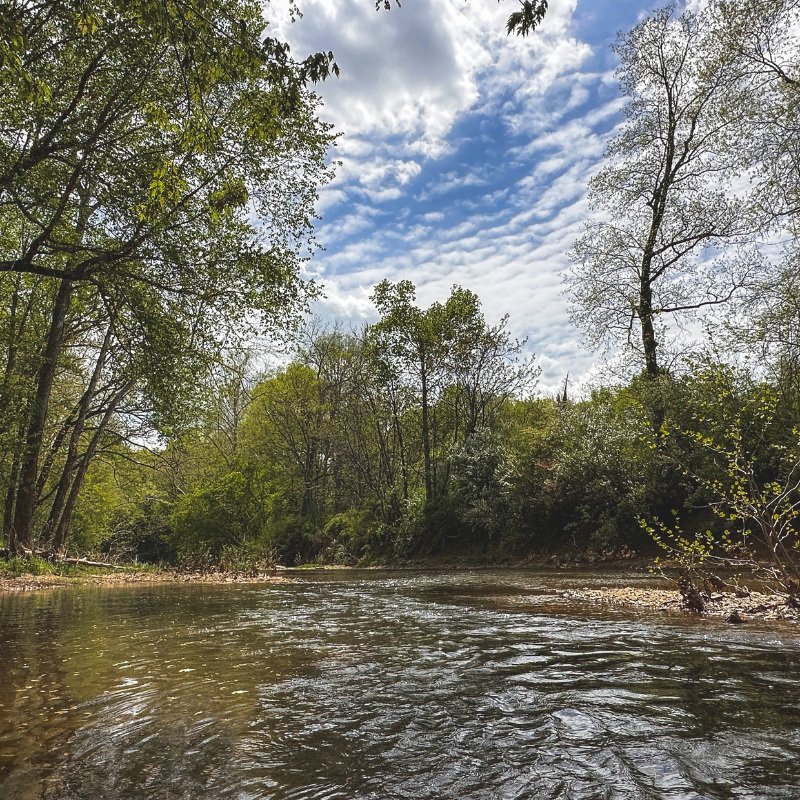"Rural sprawl" is threatening the region's cleanest waters
/Sprawl and unplanned development is no longer just an urban issue
Photo by Ed NEville.
If we’re talking holiday presents, parking lots, or student loan debt, bigger isn’t always better. But when it comes to forests, bigger definitely is better.
From supplying the natural resources that construct our homes, to providing scenery for our weekend drives and habitat for wildlife, to creating the oxygen we breathe, forests are essential to life on Earth.
If you have clean water in your glass, thank a forest!
Forests absorb water during rainstorms and slowly release it during dry spells, reducing flooding and preventing droughts. They filter our drinking water by stopping pollution from flowing into streams and creeks.
But our forests are in trouble. They’re being broken apart, cut down, and destroyed every day.
More than 100 acres of forest are lost in the Chesapeake Bay region daily. The Chesapeake Bay Program reports that 60 percent of area forests are fragmented by roads and subdivision, and 36 percent of private forests are vulnerable to further development. The World Wildlife Fund calls fragmentation of the Appalachian-Blue Ridge forests “severe.”
Paving over a forest completely is obviously damaging, but breaking forests up into smaller and smaller pieces is harmful too.
Smaller forests mean less clean air and water, so pollutants are more likely to make their way to us. Cutting a forest into pieces is akin to drilling holes into your roof or shredding your coffee filter before brewing your morning cup. Fragmenting a forest drastically reduces its ability to do its work.
Urban and suburban sprawl is a well-known threat to forests. It’s easy to see how labyrinthine housing developments break up the landscape. Yet, much of the development occurring in the most vulnerable areas of the Potomac River is a nearly invisible problem: rural sprawl.
Rural counties in northwestern Virginia and West Virginia, the areas that provide the cleanest waters to the Potomac, are experiencing a surge in large-lot developments of 10- to 20-acre properties. When looking down on these areas from an airplane or satellite, the method by which scientists often assess land use, they may appear to be unbroken forest, but they are not.
“Cutting a forest into pieces is akin to drilling holes into your roof or shredding your coffee filter before brewing your morning cup. Fragmenting a forest drastically reduces its ability to do its work. ”
Hidden beneath the leaves are roads, cabins, houses, and lawns. In Hampshire County, West Virginia, for example, 80 percent of homes are seasonal, and most of those are located too far from towns to tap into public service lines. Instead, each home has its own well, septic system, and electric line. With so many independent systems, the risk of septic system leakage rises, exposing our streams and rivers to diseases and excess nutrients from human waste.
What’s more, management of fragmented forests, if it occurs at all, is done in a piece-meal fashion rather than with a landscape-scale approach. The result is unhealthy forestland, more invasive plants, and more polluted rivers.
The good news is we can protect healthy forests from destruction. Potomac Conservancy fights to save healthy lands because a world without forests is not a world any of us wants to see.
Take the story of White Horse Mountain, for example. The 1,700 acre upstream forest in West Virginia was slated to become 70 residential lots. But thanks to concerned citizens and our donors, we’ve laid the groundwork for the forest to be protected forever. And if we’re successful, White Horse will soon become a new public recreation area that everyone can enjoy.
Saving healthy land is no easy task, and we need all the help we can get. If you feel passionate about protecting what’s left of local forests, consider donating to our campaign to save White Horse Mountain from development.
And if you’re a landowner, the biggest gift you can give to the Potomac River and our local environment is to protect your land through conservation. You can learn more about that here.
We’re fighting to save healthy lands because a world without forests is not a world any of us wants to see.














Our community power protected this 1700-acre property a decade ago. Now our Potomac River region is healthier and more resilient because of this easement. This land is forever preserved for future generations to enjoy and recreate on.